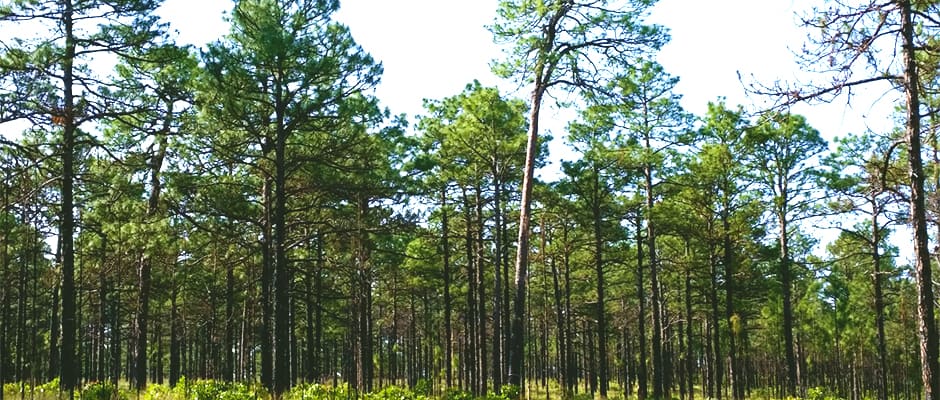Share this article
Discover biodiversity in North Carolina Sandhills
The Sandhills are an inland habitat type, characterized by rolling hills capped by deep coarse sands. Wedged between the Coastal Plain and Piedmont regions of North and South Carolina and Georgia, the Sandhills contain dry, nutrient-poor soil, and this habitat contains only plants adapted to such harsh conditions. The longleaf pine is the dominant tree species in this system and is essential to its integrity, but the floral and faunal diversity of the system lies in its understory. In fact, the longleaf pine–wiregrass forest may well be the most diverse North American ecosystem north of the tropics, containing rare plants and animals not found anywhere else. The understory throughout the longleaf range contains from 150 to 300 species of groundcover plants per acre, more breeding birds than any other southeastern forest type, about 60 percent of the amphibian and reptile species found in the Southeast—many of which are endemic to the longleaf forest—and at least 122 endangered or threatened plant species.
The biodiversity of the Sandhills depends on a combination of relatively high rainfall, very porous, sandy soils, and an active cycle of wildfires that creates a mosaic of longleaf pine community types. Longleaf pine forests, though once covering over 90 million acres of the Southeastern United States, are now greatly diminished and fragmented by human development.
By the end of the 18th century, at least half of the people living in the Sandhills were Scottish immigrants – primarily from the Highlands and Western Isles of Scotland. These early settlers came to the area for the freely available land, its forests and rivers, and the reasonably fertile soils. The region’s longleaf pine trees were said to produce better tar, pitch, rosin, and turpentine (naval stores) than other species of pine. The naval stores bounty offered by the English parliament helped make it extremely profitable. By 1768, 60 percent of the naval stores exported from the American colonies came from North Carolina.
Come join us as we revisit this unique forest community in the Sandhills of North Carolina at the 4400-acre Walthour-Moss Foundation, one of the field trips at the 23rd Annual Conference with seats still available. Once you’ve arrived at your destination, you’ll rotate between stations to learn about longleaf-adapted wildlife, native plants, and longleaf management and the use of fire. Let your mind drift back in time to the days of colonial American as you see an actual tar kiln demonstration and learn the significance of a “catface” tree. Discover the plants and animals that call this place home. Take a unique look into the nest cavity of a red-cockaded woodpecker to get the ‘inside’ story while knowledgeable longleaf pine forest experts tell of its history and management. Learn how modern day caretakers are managing this delicate ecosystem and pulling it back from the brink of existence. Oh, and don’t mind the man in the kilt playing the bagpipes. He’s still looking for the red coats to march through Pinehurst! When you drift back into reality, we’ll even give you a ride back to the bus on a mule-drawn wagon. Come spend some time with us. You’ll be glad you did!
Header Image: Longleaf Pine Ecosystem at Walthour-Moss Foundation. ©Susan L. Miller/USFWS








